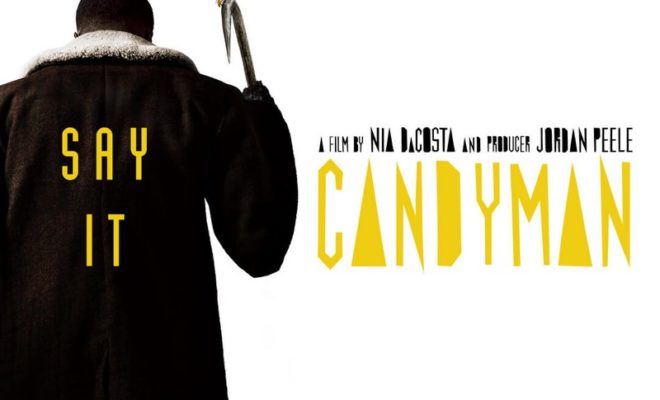
Movie Reviews
Candyman
By: Maggie Stankiewicz
Nia DaCosta’s Candyman is a sharp, stylized and often scathing reimagining of the 1992 slasher classic. Not a reboot or a direct sequel, Candyman modernizes the myth and establishes a richer ethos than its predecessor. Despite having a mountain of overhype and expectations ahead of it, this new Candyman is up to the task. Though not flawless in its execution, Nia DaCosta’s Candyman looks like a butterfly and stings like a bee.
Candyman was at a disadvantage from the start (as are most films with such a rich lineage), but the challenges extend far beyond pleasing fans of the original. From multiple delays in release dates and the media’s erasure of Nia DaCosta in favor of Jordan Peele to its social significance – which is undoubtedly bound to ruffle a few delicate feathers – Candyman was presented with many seemingly insurmountable foes.
Even so, Nia DaCosta is up to the task. As the film’s director and one of three screenwriters (the others being producer Jordan Peele and Win Rosenfeld), Candyman explores the contemporary consequences of gentrification and social injustice in the same Chicago neighborhood as the original. The titular demon, Candyman, is not as powerful in the present day – as he’s gone from urban legend to the community’s best-kept secret. This contemplates the idea that Candyman is only as powerful as others’ belief in him.
In the film, Candyman has been at rest for decades until struggling artist Anthony McCoy (Yahya Adbul-Mateen II) stumbles upon the story of his origin and his various victims throughout the years. Anthony visits landmarks from Candyman’s past, gets stung by a bee and begins to reawaken the collective consciousness on Candyman’s existence. Anthony begins to become unhinged. The bee sting on his hand turns to necrotized flesh and he becomes consumed by images of Candyman. His descent, and eventual transformation, explore the experiences of black men through the prism of horror.
The film employs shadow puppets and creative storytelling to explain critical details of the Candyman legend, allowing the focus of horror icon’s story to be not on the suffering that spawned the legend, but the consequences that follow. In this way, black trauma is acknowledged without the element of exploitation that plagues other depictions of the black experience.
The attention to detail and reverence for its subject matter sets Candyman apart from other explorations of similar themes. There are gory kills and the ruthless slashings that genre lovers crave that pair well with the cerebral and stylized nature of the film. As the story unfolds rather slowly, building tension with the steady dissolution of Anthony’s sanity and relationship with his girlfriend Brianna (Teyonah Parris), viewers are made privy to key details on how Candyman draws his power. Yes, you must say his name. But it’s more than that. His name is an invocation. To summon is to believe. To believe is to make yourself vulnerable. And that is when he strikes.
The less you know about Nia DaCosta’s Candyman going into it, the better. This is a film that drips like honey and it’s the anticipation that makes it so sweet.





You must be logged in to post a comment Login